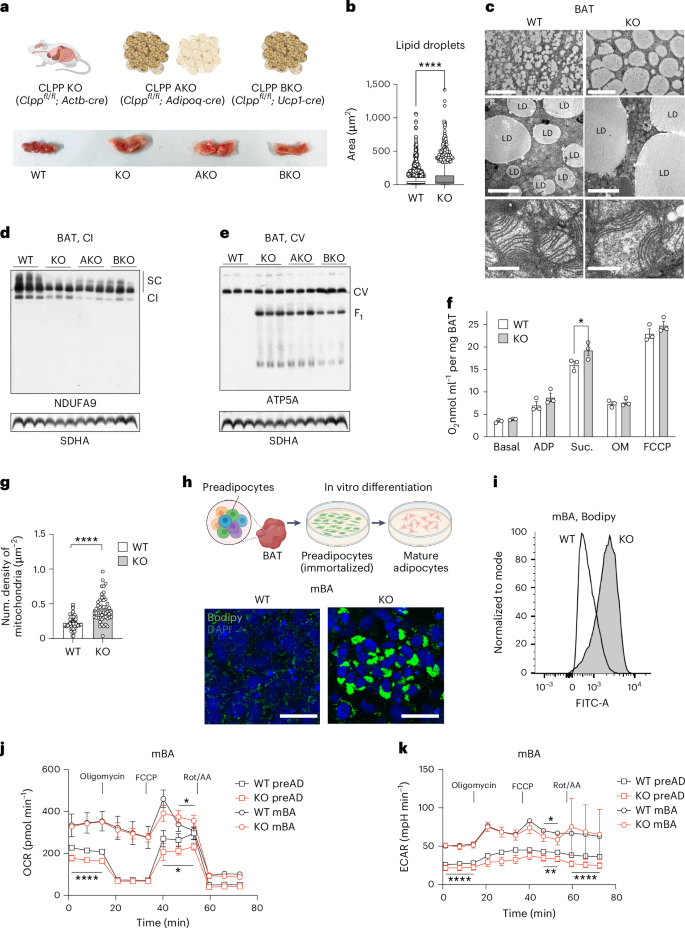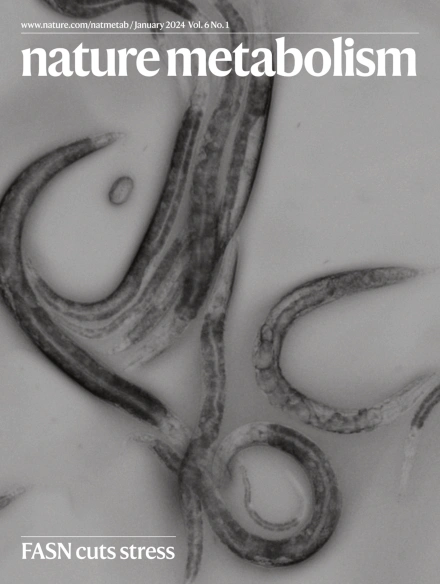2-hydroxyglutarate mediates whitening of brown adipocytes coupled to nuclear softening upon mitochondrial dysfunction
IF 20.8
1区 医学
Q1 ENDOCRINOLOGY & METABOLISM
引用次数: 0
Abstract
Mitochondria have a crucial role in regulating cellular homeostasis in response to intrinsic and extrinsic cues by changing cellular metabolism to meet these challenges. However, the molecular underpinnings of this regulation and the complete spectrum of these physiological outcomes remain largely unexplored. In this study, we elucidate the mechanisms driving the whitening phenotype in brown adipose tissue (BAT) deficient in the mitochondrial matrix protease CLPP. Here we show that CLPP-deficient BAT shows aberrant accumulation of lipid droplets, which occurs independently of defects in oxygen consumption and fatty acid oxidation. Our results indicate that mitochondrial dysfunction due to CLPP deficiency leads to the build-up of the oncometabolite d-2-hydroxyglutarate (d-2HG), which in turn promotes lipid droplet enlargement. We further demonstrate that d-2HG influences gene expression and decreases nuclear stiffness by modifying epigenetic signatures. We propose that lipid accumulation and altered nuclear stiffness regulated through 2HG are stress responses to mitochondrial dysfunction in BAT. CLPP-deficiency-driven mitochondrial dysfunction in brown adipose tissue leads to the accumulation of d-2-hydroxyglutarate, in turn promoting lipid-droplet enlargement by altering gene expression and epigenetically regulating nuclear stiffness.


2-羟戊二酸介导棕色脂肪细胞的增白,并偶联线粒体功能障碍的核软化
线粒体通过改变细胞代谢来应对这些挑战,在调节细胞稳态以响应内在和外在线索方面发挥着至关重要的作用。然而,这种调节的分子基础和这些生理结果的完整范围在很大程度上仍未被探索。在这项研究中,我们阐明了在线粒体基质蛋白酶CLPP缺乏的棕色脂肪组织(BAT)中驱动增白表型的机制。在这里,我们发现clpp缺陷的BAT显示脂滴的异常积累,这与氧气消耗和脂肪酸氧化缺陷无关。我们的研究结果表明,CLPP缺乏导致的线粒体功能障碍导致肿瘤代谢物d-2-羟基戊二酸(d-2HG)的积累,从而促进脂滴增大。我们进一步证明d-2HG通过改变表观遗传特征影响基因表达并降低核硬度。我们认为脂质积累和通过2HG调节的核刚度改变是对BAT线粒体功能障碍的应激反应。
本文章由计算机程序翻译,如有差异,请以英文原文为准。
求助全文
约1分钟内获得全文
求助全文
来源期刊

Nature metabolism
ENDOCRINOLOGY & METABOLISM-
CiteScore
27.50
自引率
2.40%
发文量
170
期刊介绍:
Nature Metabolism is a peer-reviewed scientific journal that covers a broad range of topics in metabolism research. It aims to advance the understanding of metabolic and homeostatic processes at a cellular and physiological level. The journal publishes research from various fields, including fundamental cell biology, basic biomedical and translational research, and integrative physiology. It focuses on how cellular metabolism affects cellular function, the physiology and homeostasis of organs and tissues, and the regulation of organismal energy homeostasis. It also investigates the molecular pathophysiology of metabolic diseases such as diabetes and obesity, as well as their treatment. Nature Metabolism follows the standards of other Nature-branded journals, with a dedicated team of professional editors, rigorous peer-review process, high standards of copy-editing and production, swift publication, and editorial independence. The journal has a high impact factor, has a certain influence in the international area, and is deeply concerned and cited by the majority of scholars.
 求助内容:
求助内容: 应助结果提醒方式:
应助结果提醒方式:


